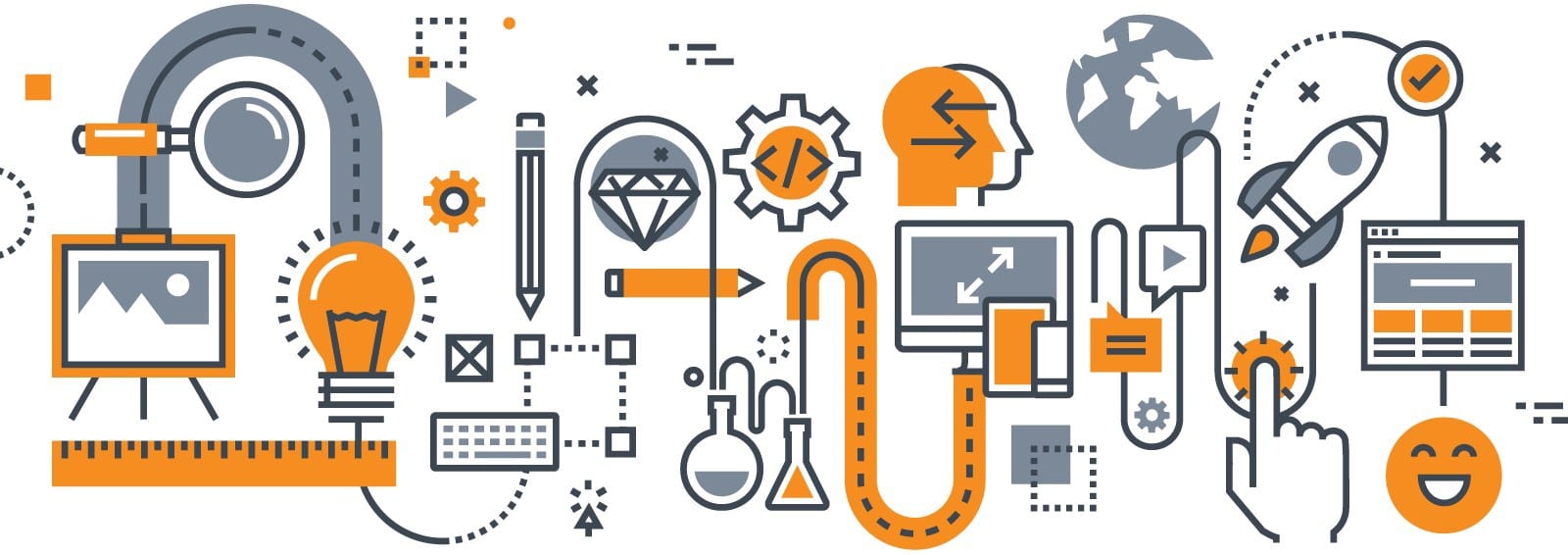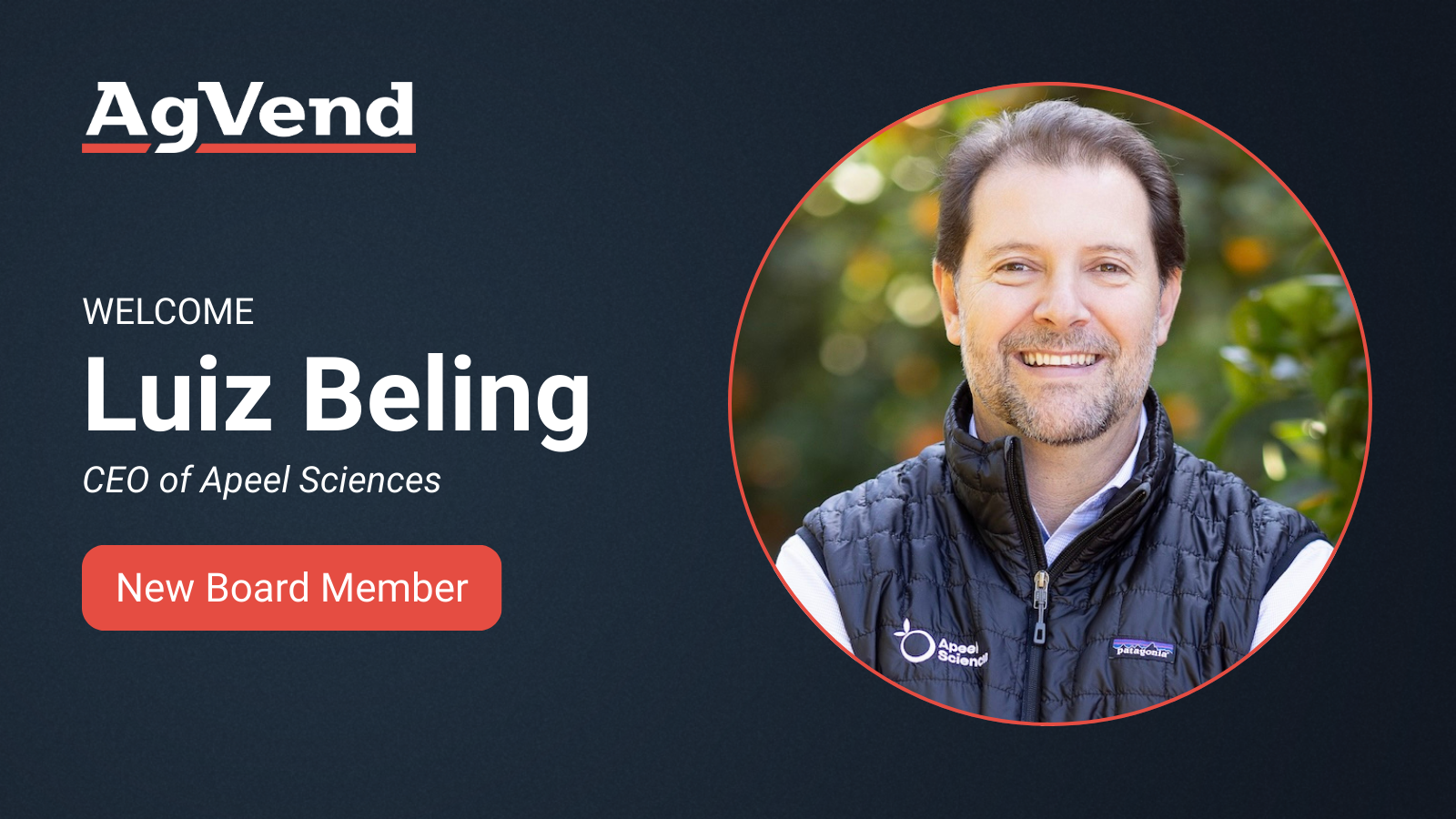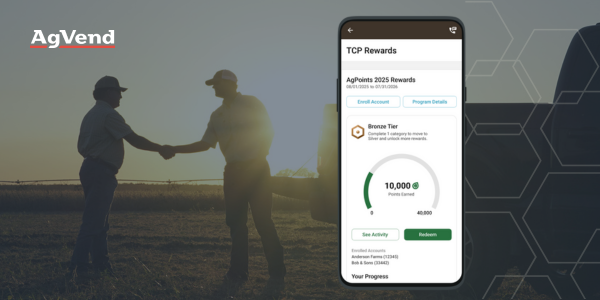
- September 30, 2021
How user feedback, iteration, and flexibility guide AgVend’s product design process

Product design in the ag world can feel fast and furious: new features hitting the market before they’re ready, companies competing with each other to be first with a new feature, and new problems that need solutions appearing quickly.
But at AgVend, a prioritization of speed doesn’t have to mean less quality. In the lightning-fast 21st century, we work to release features as soon as possible too. But added to that process is continuous iteration on our features after they’re released. In our design process, minimum viability is just a starting point, not the finish line. We listen to feedback, come up with better ideas, and iterate on our products — from minimum viability to maximum evolution. There’s no “MVP and done” here.
We have empathy for our users and care about solving their problems in tangible ways. That’s why human-centered design is at the core of our products. But what does empathy for the end user mean in practice? How does it affect the design process? To put it simply, we iterate on products frequently, take into account both user feedback and employee ideas, test assumptions, and never believe we have all the answers.
Here’s a glimpse in more detail of how our design process plays out to create the best, most helpful and solutions-oriented products possible:
We act on user feedback
Think about the last time you filled out some kind of feedback survey — for your gym, car repair shop, or new computer you just bought. You put time into giving answers that could help make the product or experience better. And then… you wait, and wait, and wait some more. You keep returning for the same service or product, but nothing changes. What was even the point of you giving all that feedback?
That’s the opposite of what we do at AgVend. User feedback informs our whole design process. We don’t stash it at the end of a 3-year roadmap; instead, we use it to make our product better as soon as possible. It sounds like common sense — but in a world where companies feel a rush to get a product out quickly (even when it’s flawed), integrating user feedback in real time can be rare. But we believe speed doesn’t have to mean a sacrifice in quality.
Instead, our approach is twofold: speed and iteration. We start simple to quickly get a solution into the world. It may be imperfect at first, but it still provides value and is a foundation on which to build. Then, we test it with our users, listen to feedback, and iterate. A fast feature release does not equal “done” for us; it’s simply a starting point to continuously improve.
“It’s important to act on the feedback instead of just sitting on it, so people you’re making the product for can see the results of your conversations with them,” said AgVend product designer Melinda West. “We want to empower our users to make an impact on the product they use every day.”
For example, take our Job Completed Notifications. When we first released these for growers, our partners asked for those notifications to also go to their sales team so everyone stays on the same page. Just a week later, we implemented text notifications for salespeople. And we can take it further: going forward, we’ll implement in-platform notifications, notification settings, and more. Every feature starts with the kernel of an idea, and many of those ideas come directly from our users.
When it’s time to design a new product or feature, we start with a simple, lightweight solution to a problem we’re aware of. We start with that simpler solution so we can test and expand on it as the process evolves.
Throughout that expansion process, we prioritize any user experience issues we find, instead of shuffling them to our backlog and promising to deal with them later. Because user feedback isn’t an annoyance to be dealt with: it’s a core feature of our product design.
We are always iterating
Our products and features are constantly evolving. It’s a design process that’s less a closed loop and more a constantly-moving wave of information and ideas. Our partners’ needs and problems are always changing as the world does, so why shouldn’t our design process mirror that?
When we design a new feature, it’s not a race to get something out as soon as possible, and then move onto the next product. We work quickly to release a new feature, but know that it’s just a starting point for our design process. The best product won’t necessarily be the first version we release, so we stay flexible and open to feedback.
Before we launch a big feature, we meet with multiple partners, as well as growers they serve across the U.S., to understand how they do business and figure out potential ways we can help them. Based on those conversations, we brainstorm as an internal team and start to come up with solutions. But we know we don’t have all the answers: we take those designs to our partners for even more feedback.
From there, we iterate, develop, and then iterate again.
And for good measure, we continue to iterate once our partners have had a chance to play with all the features and get a good feel for the product using their actual data. We then turn that feedback into new features that truly help solve real-world problems our partners experience. No guesswork here.
And this philosophy is baked directly into our design process. We know we aren’t perfect and we definitely don’t have all the answers. That’s why we leave space in our roadmap to learn new things from the people whose opinions matter most — our partners’. And not only do we leave enough time and space to hear new ideas and feedback: we leave time to actually act on it before moving on to longer term projects.
We cultivate an open and high-performing work environment
While we hold user feedback at the top of our priority list, there are other opinions we take into account as we design something new: our team’s.
Here at AgVend, everyone’s opinion is valued and respected. No matter what your position or so-called “level” here, you can easily make a real impact on the product without going through layers of red tape. In our design process, hierarchy or arbitrary position titles don’t get in the way of great ideas.
That work environment is twofold: we care personally, but challenge directly. People can speak up and challenge leadership without fear of repercussions, because we know we all have the same end goal: to create the most far-reaching solutions and best-performing products for our partners.
Our creative process is sacrosanct. We keep meetings to a minimum so each person has more time to focus on designing (and iterating on) the best possible product. We prize agility and creativity over repetitive ceremonies and spending time in meetings just to say that we met.
The benefits of that work environment speak for themselves. Prioritizing the creative process and the ideas of the whole team ensures we’re designing the best possible features. But it also keeps our employees engaged, interested, and empowered.
Human-centered design is a win-win for everyone
Our product design process isn’t complicated, and it doesn’t need to be. It’s about idea generation, quick action on feedback, and agility. We actively seek out feedback from our partners, because we’re not afraid of it. Instead, we welcome it.
We don’t build things just to check a box, or to release the first version we can and then completely stop evolving it. At the end of the day, if something doesn’t add value for our partners and their growers, we won’t build it. The best way to figure out that value? Actually listening to the people who use our product every day.
Internally, we also prioritize the ideas, creativity, and opinions of our team — because a strong team builds a strong product.
At every step of the way, we remain human-centered. For solutions and features that are helpful to actual humans, we have to prioritize those people in the design process. Their ideas, feedback, and abilities inform everything we do. And our end users get to enjoy even stronger, more impactful products because of that approach.
—
AgVend is the leading provider of digital engagement software to serve the producer of tomorrow. Our white-labeled information and commerce portals are designed to strengthen the relationship between the ag distribution channel and their grower-customers. The AgVend team is composed of individuals with decades of experience in agriculture, digital marketing, and enterprise software for the Fortune 500. Headquartered in Minneapolis, Minnesota, AgVend operates a distributed organization model with local coverage in all major US and Canadian ag regions.


